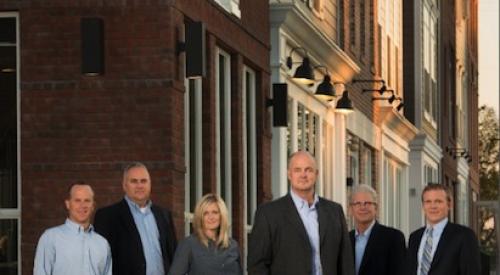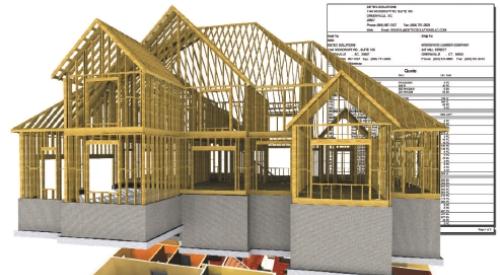|
Imagine you've been working for hours on the description of an important new project and someone down the street hits a power pole. All the electricity in your area goes out. How would you feel if your document was not saved? All that work and time were wasted and you need the project description tomorrow for a bank presentation.
 |
Fortunately, most of us have already managed that risk by having auto save or backup systems for our computers. That protection is "risk management." Risk management may not be sexy, but it sure saves money and time.
The same principle of planning for "What if" or risks applies to how we run our business. In some areas of the country with earthquakes or hurricanes, businesses have learned that good risk management is not only a way of life but is also smart for business.
Risk management is also continuously looking at opportunities to improve a business or prevent risky situations by taking measure before the crisis occurs — not after.
For the past several years, I have been privileged to work with some of the best-managed home builders in the country both within the National Housing Quality certification program and as a judge in the NHQ Awards.
I asked some of the recent NHQ Award winners to share some insight into how they avoid risks. Here are some excellent examples, in their own words, of how they avoid risks while incorporating different aspects of risk management.
Strategic Planning
Well-managed businesses are continually planning and adjusting strategic plans and goals. All of the NHQ Award winners are effective planners and use a variety of ways to plan and minimize risk.
Jo Anne Estes, Estes Homes, Squim, Wash. "We spend a lot of time evaluating the market locally, regionally and nationally. Kevin (president of Estes Homes) looks at interest rates every day. He also looks at economic indicators. What is the overall economy like? We spend a lot of time deciding on the number of unsold homes we are willing to start, given the market conditions at the time of start. We always contemplate what number of homes we are willing to have at risk based on current market conditions. We have shelved a planned start based on traffic alone."
Ron Swecker, Grayson Homes, Ellicott City, Md. "We set up all of our communities as separate LLCs to help reduce overall risk to the company."
Todd Booze, Ideal Homes, Norman, Okla. "We have semi-annual banking meetings to go over everything from strategic planning initiatives and performance; market conditions to include new home spec inventory; and existing market listing numbers. We have several report mechanisms that we use to keep a pulse on our local market. The banks are not accustomed to seeing this level of sophistication, and it has made them comfortable with us and our knowledge of the marketplace. It also gives them information that they are unaware of in the marketplace and helps them manage their other builder clients."
Alan Parrow, Pringle Homes, Eustis, Fla. "Strategic planning is used by Pringle Development to determine the overall direction of the company and its ultimate viability in light of the predictable, as well as the simply possible changes that may occur in our operating environment. It shapes not only goals but also helps delineate the broad limits within which the company operates. Strategic planning also dictates both the resources we likely will have accessible to achieve our goals and the principle patterns in which these resources will be allocated.
"We begin by imagining the desired future state of the company. With that vision, we then analyze the present state and its strengths, weaknesses, opportunities and threats (or risks). Then, we compare the present with the desired future to identify gaps and start drawing a road map for closing those gaps. Project prioritization, risk analysis and an analysis of the likelihood of changes in the industry are all well-established basics in the Pringle strategic-planning process."
Denis Leonard, Veridian Homes, Madison, Wis.: "Using annual self-assessments geared toward the National Housing Quality Award criteria allows us to evaluate our strengths and opportunities for improvement (OFI) on a company wide basis. This becomes part of our corporate SWOT analysis. The OFI's are prioritized and teams are assigned with deadlines to address these issues."
Human Resources
High turnover and poorly trained or unqualified people can be costly in many ways.
Todd Booze notes Ideal Homes implements recruiting practices and trains its people to be their greatest asset. "It is often said, but not practiced, that our people are our No. 1 asset," Booze says.
"We have developed great processes to recruit and train our people. No growth initiative can be carried out unless you have trained people in place. Too many times in our industry builders plan for growth, acquire new property then try to fill in the people after the fact. They are in a crunch and many settle for inexperienced staff. Once you get them you must have a great process to train them and give them feedback on their performance.
"Many times builders hire "experienced people," but they are not experienced in the company-specific systems and processes and are still thrown out in the field to perform. This can be very dangerous. Staff must be ingrained into your culture so they understand how to represent your company with customers, trade contractors, vendors, etc. One bad or untrained hire can do tremendous damage to the relationships you have worked so hard to establish."
Pringle Homes' Parrow: "Because these are litigious times, we attempt to protect against lawsuits regarding wrongful termination, harassment, discrimination, promotion or salary actions, etc. by two major means: ongoing training by our human resources director and constant visibility of human resource and safety policies on our company intranet.
"Background screening, drug testing, safety programs, etc., are also ways Pringle seeks to reduce various potential risks involved in the workforce and the workplace. Finally, to protect the company in the event of loss of personnel, Pringle created a program of cross-training with the goal that each key role in the company has a 'back up' for performance of that role. We also use job descriptions and a succession planning program that reaches down to mid-level management to accomplish this."
Veridian Homes' Leonard: "A motivated and satisfied team is crucial to a successful organization. A strong emphasis is placed on training and empowerment to reduce turnover and avoid the costs of rehiring and retraining. Using Caliper evaluations and detailed structured interviews we determine who the best fit for the company is. This is followed by an introduction to quality, the vision and the mission of the company by the president of operations, David Simon."
Construction Quality
Having no defects at closing can save money for both builders and trades. Zero defects can also increase customer satisfaction, which results in improved referrals to other potential buyers.
Grayson Homes' Swecker: "We contract with a third-party safety inspection firm to visit three communities every month and document any potential safety violations. These reports include photographs to help the trade contractors understand exactly what the violation is and how to avoid it in the future. We require our trades to respond in writing specifying their actions to eliminate the violation in the future."
Veridian Homes' Leonard: "There are several key initiatives at Veridian that contribute to lowering the risk of our operations:
- Kaizen Redline Reviews of home plans by a cross-functional team and key trade partners allows us to ensure our plans are as perfect as possible prior to construction. This cross-functional team attitude ensures that many perspectives are taken into account and that the costly risk of error in plans is eliminated prior to construction.
- Building every one of our homes certified to Energy Star and green-built standards allows us to provide high-performing homes [that are] healthy, energy efficient and environmentally friendly.
- Our integrated Quality, Environmental and Safety Management System allow us to create consistent products of a high standard.
- Our environmental system that has earned Wisconsin's Green Tier status, i.e. equivalent to ISO14000, has ensured that our erosion control and storm water issues are addressed proactively in collaboration with the Department of Natural Resources and the cities of Madison and Sun Prairie."
Ideal Homes' Booze: "We have established a systematic approach to ensure construction quality and consistency of our products. Not only do we have specific scope standards for all trades, we also track all nonconformities to eliminate reoccurrence of issues. We conduct internal inspections on every home at pre-drywall and final QA. Also, we have contracted with outside inspection contractors to inspect at two stages of construction. They conduct insulation, mechanical, drainage plane and flashing inspections (an energy efficiency and building science audit). They also conduct a final blower door and duct blaster test to ensure the home performs in a manner in which we specified.
"These two outside inspections are conducted on every home. We are also very involved in training our trades and giving them feedback on their nonconforming scope issues. Construction quality is one of the largest risk areas for builders, and there is never enough that can be done to ensure the quality of the product we are delivering to our customers."
Pringle's Parrow: "Our Safety Committee continues to review policies and maintain and update a safety manual (a 'living document') on our company intranet."
Land Purchase
As we have been seeing for the past several months, many builders have been suffering from too much land debt and too few home sales.
Estes Homes' Jo Anne Estes: "Land purchases tend to put builders at risk if not structured correctly. We endorse purchasing land on an option or other terms designed to protect capital. The land we purchased for our townhome community was structured to pay half at purchase and half at sale of each unit. If you have to use capital to purchase land, keep it small relative to capital reserves."
Ideal Homes' Booze: "We have gotten out of all joint ventures with land owners because of a lack of understanding of the industry and unrealistic expectations of performance in cyclical markets. We have taken an approach to reinvest a significant portion of equity each year with a venture capital investor to purchase our future land positions with cash. We will not borrow money to buy future positions due to interest rate fluctuations and uncertainty of market conditions.
"This has been the No. 1 reason builders have gone broke; slowing markets and rising interest rates make builders not being able to meet interest obligations. Our approach is obviously a very conservative approach, but we are trying to grow the right way that takes us out of risking everything."
Grayson Homes' Swecker: "We hold weekly land development meetings to review every new community and discuss possible risks associated with each community. During these meetings we discuss market issues as well as possible jurisdictional issues.
"During a recent meeting, we developed a strategy to allow Grayson to do some additional clearing in a critical area on the waterfront in a new community. We were able to clear an area around the community clubhouse to enhance the water views while allowing the county to do some additional reforestation in the community."
Trade Relations
In most cases, trades build all of the homes builders sell, so it is here that builders take risk of delivering poor quality and overrun of cost.
Ideal Homes' Booze: "Have a solid trade contract agreement with all contractors that establishes responsibility. We require the trade contract to carry certain limits depending on the size of their organization and require them to list us as 'additional insured' on their policies. We also require them to indemnify and hold harmless as to any issue that may arise.
"It is critical that builders have and understand their agreements with their TC/vendors so that a lot of potential liability can be avoided at a later time."
Pringle Homes' Parrow: "Pringle always seeks to contract with insured trade partners. Pringle has tried to handle this in several ways:
- We maintain current certificates of insurance on all subcontractors.
- We stick with the guys that "brought you to the dance" and who you can implicitly trust.
- We form a Trade Partners Council and encourage these key players to get NHQ-certified."
Veridian Homes' Leonard: "We use detailed contracts, scopes of work, and training and trade certifications to create a clear understanding of work and requirements with our trade partners. This ensures that communication is strong and clear regarding what is required for each home.
"Weekly BUILD meetings with our partners allow us to ensure that we have a close relationship and that our Evenflow scheduling, which ensures consistent production, is on track. These approaches have helped drive a mind set of process and continuous improvement."
Performance Management/Technology
We are seeing more and more PDAs and laptops in the field with instant contact, pictures and a coordinated system. This is saving time and avoiding costly errors.
Pringle Homes' Parrow: "Security and survivability of our IT resources are things we take very seriously here at Pringle, and those two topics, though complementary, are not entirely the same thing. Redundancy and reliability of equipment and data are key factors to saving time and money.
"Tomake sure that business operations move forward regardless of the obstacles, we changed the methodology of backups here at Pringle about a year ago. We now use a semi-automatic tape library system instead of portable hard drives (as were used previously). What this means is that the network system takes care of backing itself up every night with a robotic tape loader.
"Based on the hurricane activity here in Florida, we learned the difficulty of keeping servers up and running so that we could at least maintain skeleton level crews and response capabilities in times of such crises. Working with the safety officer, our IT Department has purchased a full generator system (just put in place a month or so ago) to cover the entire headquarters facility. All servers are kept in operation, and the A/C systems are kept operational — a crucial point to make for any long term emergency."
Grayson Homes' Swecker: "We post all selection sheets and information necessary for home construction on a Web site so our trades can access and retrieve the most current selections for the home. In the past, we were mailing or faxing this information, and we were responsible for making sure that everyone received what we sent. Now we post the information as soon as we have it, and the trades are responsible for checking it every day and making sure they have the latest information before starting work.
"We use a quality management system based on a Blackberry platform for our supervisors to document any incomplete or defective work. The information is then sent via e-mail at the end of the day directly to every trade listed. The e-mail sent to the trades tell them exactly what we need to have them do and when we expect it to be done. This information is sent to them every day until the supervisor marks the work as being complete. This system makes it nearly impossible for things to be forgotten about once they have been entered into our system."
Veridian Homes' Leonard: "Our Home Tracker quality and customer relations system allows us to enter issues into palm pilots in the field. This information is automatically updated to our databases and scorecards and then we can email a PDF of required work to key trade partners. As a result we reduced defects in 2006 by more than 50 percent while reducing inspection by 50 percent."
| Author Information |
| Serge Ogranovitch is a senior partner and founder of The Potomack Group, an international management consultant firm. For the past several years he has been involved with the housing industry as a judge for the National Housing Quality Award and has worked closely with the NAHB-Research Center for the development and implementation of the NHQ quality management systems.
|
|











